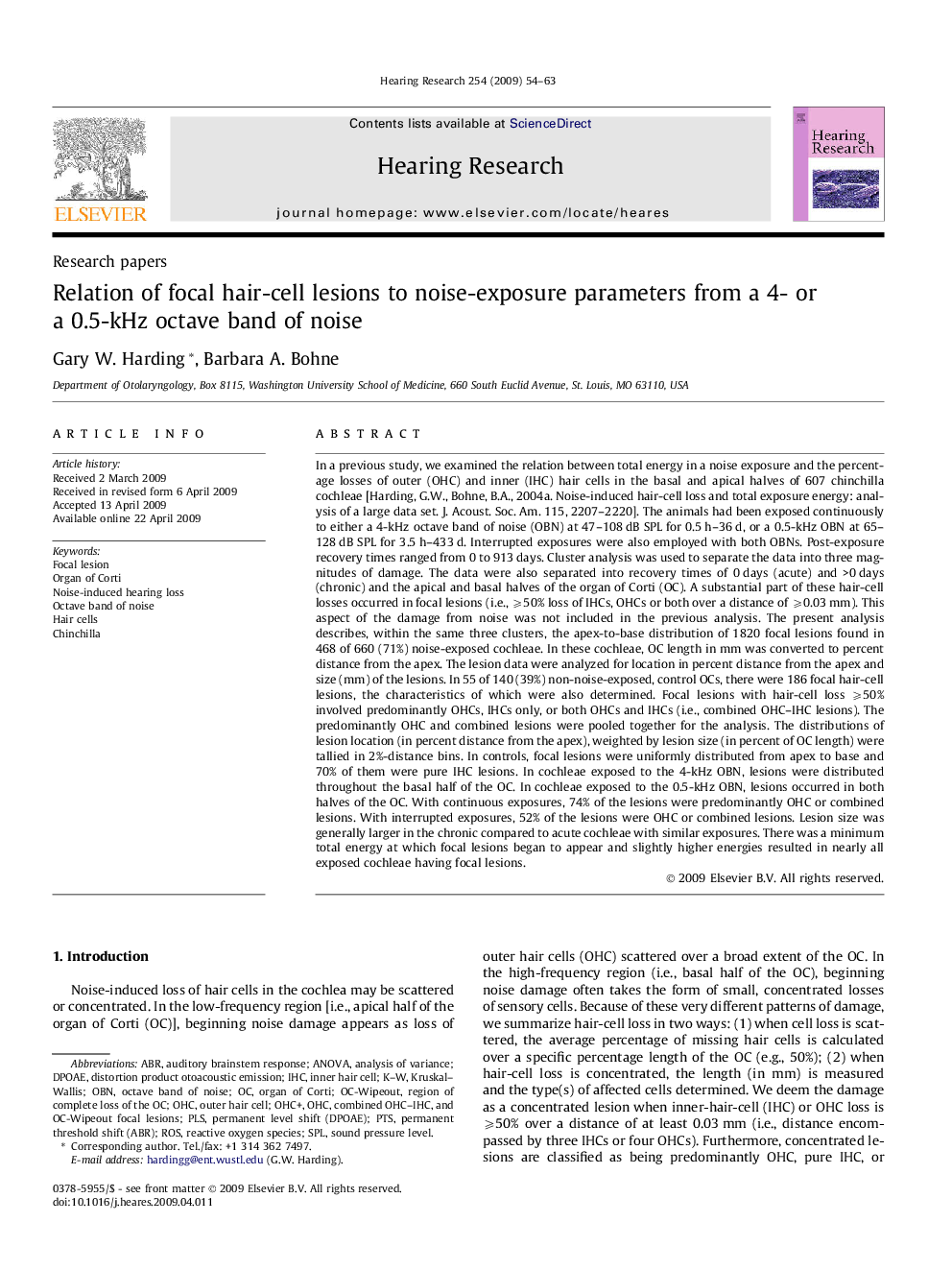| Article ID | Journal | Published Year | Pages | File Type |
|---|---|---|---|---|
| 4355882 | Hearing Research | 2009 | 10 Pages |
In a previous study, we examined the relation between total energy in a noise exposure and the percentage losses of outer (OHC) and inner (IHC) hair cells in the basal and apical halves of 607 chinchilla cochleae [Harding, G.W., Bohne, B.A., 2004a. Noise-induced hair-cell loss and total exposure energy: analysis of a large data set. J. Acoust. Soc. Am. 115, 2207–2220]. The animals had been exposed continuously to either a 4-kHz octave band of noise (OBN) at 47–108 dB SPL for 0.5 h–36 d, or a 0.5-kHz OBN at 65–128 dB SPL for 3.5 h–433 d. Interrupted exposures were also employed with both OBNs. Post-exposure recovery times ranged from 0 to 913 days. Cluster analysis was used to separate the data into three magnitudes of damage. The data were also separated into recovery times of 0 days (acute) and >0 days (chronic) and the apical and basal halves of the organ of Corti (OC). A substantial part of these hair-cell losses occurred in focal lesions (i.e., ⩾50% loss of IHCs, OHCs or both over a distance of ⩾0.03 mm). This aspect of the damage from noise was not included in the previous analysis. The present analysis describes, within the same three clusters, the apex-to-base distribution of 1820 focal lesions found in 468 of 660 (71%) noise-exposed cochleae. In these cochleae, OC length in mm was converted to percent distance from the apex. The lesion data were analyzed for location in percent distance from the apex and size (mm) of the lesions. In 55 of 140 (39%) non-noise-exposed, control OCs, there were 186 focal hair-cell lesions, the characteristics of which were also determined. Focal lesions with hair-cell loss ⩾50% involved predominantly OHCs, IHCs only, or both OHCs and IHCs (i.e., combined OHC–IHC lesions). The predominantly OHC and combined lesions were pooled together for the analysis. The distributions of lesion location (in percent distance from the apex), weighted by lesion size (in percent of OC length) were tallied in 2%-distance bins. In controls, focal lesions were uniformly distributed from apex to base and 70% of them were pure IHC lesions. In cochleae exposed to the 4-kHz OBN, lesions were distributed throughout the basal half of the OC. In cochleae exposed to the 0.5-kHz OBN, lesions occurred in both halves of the OC. With continuous exposures, 74% of the lesions were predominantly OHC or combined lesions. With interrupted exposures, 52% of the lesions were OHC or combined lesions. Lesion size was generally larger in the chronic compared to acute cochleae with similar exposures. There was a minimum total energy at which focal lesions began to appear and slightly higher energies resulted in nearly all exposed cochleae having focal lesions.
